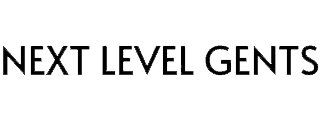When you buy a leather product, the company will market the grade. Learn about the different leather grades to buy the best quality.
There are many types or grades of leather. The main ones are full grain, top grain, split grain, genuine, and bonded leather.
Whether you’re buying a wallet or couch, brands will market the leather grade.
By knowing the different types, you can make informed decisions.
The quality and features of the leather also come from other factors. Several of them include the breed, food, exercise, and climate.
The following covers the process of making leather, and you’ll find details on each grade.

It starts with the hide
Hide refers to animal skin. Many leather products use the hide of cows, buffalos, pigs, sheep, deer, and goats.
Cowhide is the most popular because of abundant supply.
The first step to making leather is removing the hide from the animal.
Then the hide is salted or placed in salt brine to stop it from decomposing.
After the preservation process, the hairs are removed by soaking in a chemical solution for one or two days.
The hide will absorb the moisture and become thicker. Then, it’ll be cut into two layers.
The following covers the different layers of the hide:
- Grain: The top and outermost layer of the hide. The fibers are dense and tight, making it the strongest layer.
- Grain and Corium Junction: The second outermost layer. It’s where the tight fibers of the grain blend with the looser corium fibers.
- Corium: The thickest layer of the hide is also known as suede. Its fibers are looser and weaker. It connects fat or collagen to the animal’s muscles.
- Flesh: A layer of muscle and fat. The hide is usually split to keep the layers above it.

The top layer is for high-quality leather goods, while the bottom is for lower-end items.
After splitting the hide, the next step is tanning.
It’ll go into a tanning solution. It removes the excess moisture through a high-pressure drying process.
Next, it goes through a second tanning process and is completely dried.
Finally, it’ll go through a dyeing process to add the finished color.
The tannery may also apply a finishing spray.
The grades of leather
There’s no official standard of leather grades. Most tanneries analyze appearance rather than quality.
But, the different parts of the hide affect performance, durability, and quality.
The following covers the types of leather in detail.
Full-grain leather
The complete grain of the hide is intact. It’s the least processed and most durable grade of leather. Full-grain is the most desired and luxurious type of leather.
If you’re looking for high-quality leather products, stick to full-grain and top-grain leather.
Top-grain leather
The second-highest leather grade is top-grain. It’s thinner because it has a layer that’s been cut off.
When compared to full-grain leather, it has a smoother look to the end product because it’s been sanded to remove imperfections.
Bonded leather
As the lowest and cheapest grade of leather, bonded leather is made of the leftovers of the hide.
Technically, it isn’t leather because it’s made of dust, scraps, and plastic that are bonded together. It’s cheap and won’t stand the test of time.
Split-grain leather
It doesn’t contain any of the hide’s natural markings or grain. The most common type of split-grain leather is suede. It’s used to make soft linings of other leather products.
Genuine leather
It’s made from the bottom of the cut. Genuine leather is heavily processed.
The name is a marketing tactic to make something that’s not good sound like high-quality. If you want quality, genuine leather isn’t it.
Frequently asked questions
What is premium grade leather?
Premium grade leather is another term for full-grain or top-grain leather.
What is the most expensive leather?
Shell cordovan is the most luxurious and expensive type of leather. It’s made from the hindquarters on the rump of the horse. Another reason it’s expensive is that it’s made by hand, and the tanning process takes 6 months.
What animal makes the toughest leather?
Kangaroo leather is lightweight and makes for the toughest leather.
What is 100% genuine leather?
As you know, genuine leather is made from the bottom of the cut and is of low quality. 100% genuine leather is saying that it’s completely genuine leather, it doesn’t make it any better.
Conclusion
An understanding of leather grades is important because you’ll know that you’re investing in quality.
A good rule of thumb is to buy full-grain or top-grain leather when it’s possible because it’s the highest quality.
Avoid genuine and bonded leather because they aren’t durable or worth the investment.
Featured photo courtesy of Pexels.
